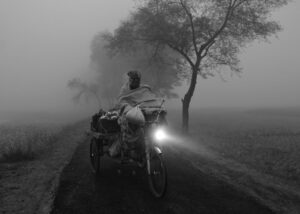Coact Digital stories desk
In India, vultures once ruled the skies, effortlessly gliding above cities and countryside alike, playing a critical role as nature’s cleanup crew. They were a common sight, circling above carcasses and waste, keeping the environment free from potential disease threats. However, the past few decades have seen a dramatic decline in these vital birds, leading to unexpected and severe consequences for public health and the environment.
How Did This Happen? The Role of Diclofenac
The trouble began in the mid-1990s with the introduction of diclofenac, a common painkiller used to treat livestock. This drug, while beneficial for animals, proved fatal for vultures. When vultures fed on the carcasses of animals treated with diclofenac, they suffered fatal kidney damage. The result? A staggering 90-98% decline in vulture populations across India by the early 2000s. Recognizing the crisis, India banned the veterinary use of diclofenac in 2006, but by then, the damage was done.
The Ripple Effects: Human Health Crisis
This decline isn’t just an environmental issue; it has had severe repercussions for human health. A study published in the American Economic Association journal revealed a shocking connection: the decline in vulture populations may have contributed to an estimated 500,000 human deaths over five years. How? Vultures are natural scavengers, preventing the spread of diseases by consuming dead animals that could otherwise harbor harmful bacteria and viruses. In their absence, these carcasses become breeding grounds for diseases, including rabies, which has seen a spike in cases due to an increase in feral dog populations.
Economic and Social Impacts
The loss of vultures has not only led to increased disease transmission but has also imposed a significant economic burden. The rise in healthcare costs and lost productivity associated with these diseases has cost India over $6.9 billion annually. This highlights how crucial these often-overlooked birds are to public health and the economy.
A Glimmer of Hope and the Path Forward
Despite the grim statistics, there are hopeful signs. Conservation efforts have led to a modest recovery in vulture populations, particularly in South India, where surveys have spotted over 300 vultures recently. However, there is still much work to be done. Banning harmful drugs, raising public awareness, and supporting conservation programs are critical steps in ensuring these essential birds thrive again.
What Can You Do?
You can contribute to conservation efforts by supporting organizations dedicated to wildlife protection or by spreading awareness about the importance of vultures in our ecosystem. Simple actions, like sharing this story or donating to relevant causes, can make a significant impact.
The story of India’s vultures is a powerful reminder of the interconnectedness of life. Protecting these birds is not just about conserving wildlife; it’s about maintaining the balance of our ecosystem, which ultimately supports human health and well-being. Let’s remember that every creature plays a role in our shared environment, and their survival is essential to ours.



